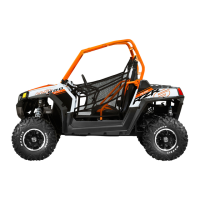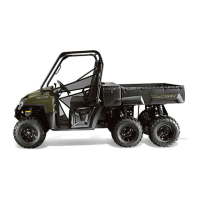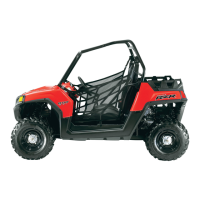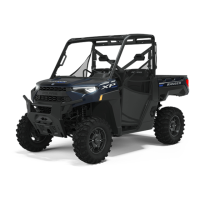ENGINE AND DRIVETRAIN BREAK-IN
1. Fill the fuel tank with clean, fresh fuel.
2. Check the oil level. Add the recommended oil as needed to maintain the oil
level in the normal (safe) operating range.
3. Drive slowly at first. Select an open area that allows room to familiarize
yourself with vehicle operation and handling.
4. Vary throttle positions. Do not operate at sustained idle.
5. Perform regular checks on fluid levels, controls and areas outlined on the
daily pre-ride inspection checklist.
6. During the break-in period, change both the oil and the filter at 25 hours.
7. Check fluid levels of transmission and all gearcases after the first 25 hours of
operation and every 100 hours thereafter.
8. Pull only light loads.
PVT BREAK-IN (CLUTCHES/BELT)
Always break in the clutches and drive belt of new vehicles, as well as after a
belt replacement.
A proper break-in of the clutches and drive belt will ensure a longer life and
better performance. Break in the clutches and belt by operating at slower
speeds during the break-in period as recommended. Pull only light loads. Avoid
aggressive acceleration and high speed operation during the break-in period.
If a belt fails, always clean any debris from the PVT intake and outlet duct and
from the clutch and engine compartments when replacing the belt.
PRE-RIDE INSPECTION
Failure to inspect and verify that the vehicle is in safe operating condition before
operating increases the risk of an accident. Always inspect the vehicle before
each use to make sure it's in safe operating condition.
ITEM REMARKS REF.
Brake system/pedal travel Ensure proper operation page 41
page 128
Brake fluid Ensure proper level page 128
Front suspension Inspect page 130
Rear suspension Inspect page 130
Steering Ensure free operation page 130
68
OPERATION

